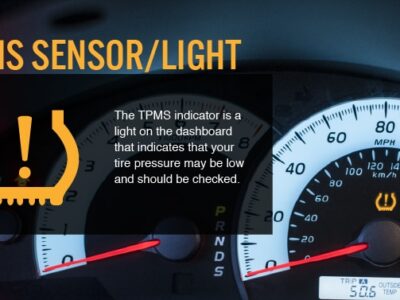
How to Check Ford Focus Transmission Fluid

If you've ever felt your Ford Focus hesitating between gears or noticed a strange whine while driving, chances are the transmission fluid might be asking for a little attention. Transmission fluid is like the lifeblood of your vehicle’s gearbox—it keeps everything cool, clean, and sliding smoothly. Without it, you’re asking for trouble. So, how do we check the transmission fluid on a Ford Focus the right way? Let’s walk through it step by step, with clarity, confidence, and a touch of personality.
- Why Transmission Fluid Matters
- Signs Your Transmission Fluid Needs Attention
- Before You Begin – A Quick Heads-Up
- Tools You’ll Need
- Checking Transmission Fluid – Automatic Ford Focus Models
- Checking Transmission Fluid – Manual Ford Focus Models
- How to Identify the Dipstick Type
- How to Read the Transmission Fluid Level
- Inspecting the Fluid Condition
- What to Do If the Fluid Is Low
- How to Add Transmission Fluid Correctly
- How Often Should You Check It?
- Common Transmission Fluid Mistakes to Avoid
- Understanding the Different Transmission Types in the Ford Focus
- When to Change vs. When to Top Off
- Professional Tips for Smooth Shifting
- Closing Thoughts
- FAQs
Why Transmission Fluid Matters
Think of transmission fluid as the lifeguard of your car’s drivetrain—it keeps things from overheating, prevents metal-on-metal friction, and helps your gears shift seamlessly. In both manual and automatic transmissions, this fluid serves three primary functions:
- Lubrication: Reduces wear between moving parts.
- Cooling: Keeps temperatures stable during operation.
- Hydraulic Power: Especially in automatics, it enables gear changes through hydraulic pressure.
Without proper levels or quality fluid, your transmission could wear out prematurely, leading to costly repairs or even a complete rebuild.
Signs Your Transmission Fluid Needs Attention
Your Focus may be trying to tell you something long before the check engine light comes on. Watch out for these signs:
- Delayed or rough gear shifts
- Slipping gears while accelerating
- Burning smell under the hood
- Grinding or whining noises
- Red or brown puddle under the car
- Transmission warning light on the dashboard
If any of these sound familiar, it’s time to grab your gloves and check that fluid.
Before You Begin – A Quick Heads-Up
Here’s something most owners overlook: not all Ford Focus models have an easy-access transmission dipstick. Many newer models—especially those with sealed or dual-clutch transmissions—require special procedures or tools to check the fluid level.
So before diving in, know your model and transmission type. The method differs slightly between manual, automatic, and dual-clutch variants.
Tools You’ll Need
Before checking or topping off the fluid, have these essentials ready:
- Clean microfiber cloth
- Funnel (narrow-tip for transmission fluid)
- Proper transmission fluid (refer to your owner’s manual)
- Jack stands or ramps (if you need undercar access)
- Gloves and safety glasses
- Socket wrench (for sealed or manual transmissions)
Having these tools handy makes the process smoother and safer.
Checking Transmission Fluid – Automatic Ford Focus Models
Most Ford Focus automatic models (especially from 2000–2011) have a dipstick for checking the fluid. Later models like the 2012–2018 PowerShift versions require a more controlled inspection.
Step-by-Step Guide for Automatic Models
- Warm up the engine: Let the car idle for about 5–10 minutes to get the transmission fluid up to operating temperature.
- Park on level ground: Ensure your Focus is on a flat surface.
- Shift through gears: Move the gear selector slowly through all gears, ending in “Park.”
- Pop the hood: Locate the transmission dipstick (usually with a red, orange, or yellow handle).
- Pull and wipe: Remove the dipstick, wipe it clean, then reinsert it fully.
- Check the level: Pull it out again and observe where the fluid reaches relative to the “HOT” or “COLD” marks.
If it’s below the “HOT” line after the engine has warmed, it’s likely time to add more.
Checking Transmission Fluid – Manual Ford Focus Models
Manual transmissions are a bit more old-school. They don’t have dipsticks; instead, you’ll use a fill plug.
You may be interested in reading Oil Reset Procedure for Mitsubishi Mirage (2014-2023)
Oil Reset Procedure for Mitsubishi Mirage (2014-2023)Step-by-Step Guide for Manual Models
- Park safely and lift the vehicle: Use jack stands for stability.
- Locate the transmission fill plug: It’s usually halfway up the transmission case.
- Remove the plug carefully: Use a socket wrench to loosen it.
- Check the level: Stick your finger in—if you can feel fluid right at the edge, it’s fine. If it’s low, add fluid until it slightly dribbles out.
- Replace the plug: Tighten it securely and check for leaks.
It’s simple, but you’ll want to ensure the right transmission fluid type—manuals differ from automatics.
How to Identify the Dipstick Type
Different Ford Focus generations use different designs:
- Early 2000s models: Traditional dipstick near the battery or firewall.
- 2012–2018 PowerShift models: Sealed system, no standard dipstick.
- 2019–2023 automatics: Often require service through a check/fill port under the vehicle.
If yours lacks a dipstick, don’t panic—it’s just a newer “sealed” design, meaning you’ll check the fluid from underneath with a fill plug.
How to Read the Transmission Fluid Level
Transmission dipsticks usually have two indicators:
- “COLD” range – for initial checks before warming up.
- “HOT” range – for accurate readings after warming up.
Here’s what you’re looking for:
- Correct Level: Fluid should be between the “HOT” marks after warming.
- Low Level: Below the lower line—add fluid soon.
- Overfilled: Above the top mark—drain some out immediately.
An overfilled transmission can foam, causing shifting issues and long-term damage.
Inspecting the Fluid Condition
Checking isn’t just about quantity—it’s about quality too.
Here’s what your fluid’s color and smell can tell you:
| Fluid Color | Meaning | Action |
|---|---|---|
| Bright red | Healthy and clean | No action needed |
| Light brown | Slightly used | Monitor closely |
| Dark brown | Oxidized or burnt | Change immediately |
| Black or gritty | Contaminated | Possible transmission damage |
| Milky pink | Coolant contamination | Stop driving – seek service |
Transmission fluid should smell slightly sweet. A burnt odor signals overheating and potential wear inside.
What to Do If the Fluid Is Low
If you find the level below the safe mark:
- Check for visible leaks (under the car or near seals).
- Verify fluid type—use only the one specified for your Focus.
- Add small amounts gradually—overfilling causes just as many issues as low levels.
How to Add Transmission Fluid Correctly
For Automatic Models:
- Insert a funnel into the dipstick tube.
- Add fluid slowly while checking levels periodically.
- Once at the proper “HOT” mark, replace the dipstick securely.
For Manual Models:
- Use a hand pump to fill through the side port until the fluid drips slightly.
- Replace the plug tightly to avoid leaks.
Always double-check your owner’s manual for the correct fluid specification, as Ford uses different blends depending on the year and transmission type.
How Often Should You Check It?
The general rule: every 30,000–60,000 miles or once a year—whichever comes first.
If you frequently drive in stop-and-go traffic or tow loads, check more often. Heat and friction accelerate wear and oxidation, shortening fluid life.
Common Transmission Fluid Mistakes to Avoid
Here are the top mistakes we see drivers make:
- Using the wrong fluid type (a common and costly error).
- Overfilling the transmission (can cause foaming).
- Skipping warm-up before checking.
- Ignoring color or odor changes.
- Checking on uneven ground.
Being meticulous for 10 minutes can save you thousands in repairs down the road.
You may be interested in reading Oil Reset Procedure for Mitsubishi Mirage (2014-2023)
Oil Reset Procedure for Mitsubishi Mirage (2014-2023) How to Turn Off Eco Mode on a Mitsubishi Mirage: Complete Guide for Every Model Year
How to Turn Off Eco Mode on a Mitsubishi Mirage: Complete Guide for Every Model YearUnderstanding the Different Transmission Types in the Ford Focus
The Ford Focus lineup includes several transmission types:
- 4-Speed Automatic (Early Models) – Simple dipstick-based system.
- PowerShift Dual-Clutch (2012–2018) – Sealed, requires specialized check.
- 6-Speed Manual – Uses fill plug method.
- 8-Speed Automatic (2019+) – Modern, electronic level check possible.
Each system demands slightly different care—so don’t assume all Focus models follow the same routine.
When to Change vs. When to Top Off
If your fluid looks dirty or smells burnt, topping it off won’t help.
Here’s a quick breakdown:
- Top Off: Fluid is low but still clean.
- Change: Fluid is dark, gritty, or burnt-smelling.
- Flush: When replacing all fluid is necessary, usually at 60,000–100,000 miles.
Neglecting these cues can cause irreversible wear to clutches, valves, and seals.
Professional Tips for Smooth Shifting
Want your Ford Focus to shift like a dream? Keep these habits:
- Always come to a full stop before shifting from reverse to drive.
- Avoid “neutral drops” (revving in neutral, then shifting to drive).
- Warm up your car in cold weather to keep fluid viscous.
- Have your transmission inspected during every oil change.
Simple, smart habits add years to your gearbox’s lifespan.
Closing Thoughts
Your Ford Focus transmission is a masterpiece of mechanical precision. Treat it right, and it’ll serve you reliably for well over 150,000 miles. Checking your transmission fluid isn’t rocket science—it’s just one of those quiet, easy habits that save a mountain of stress (and cash) later on.
By now, you know how to do it like a pro. A little diligence goes a long way. So, grab that dipstick or wrench, and let’s keep that Focus running smooth and steady.
FAQs
1. How often should I change my Ford Focus transmission fluid?
Every 60,000 miles is ideal, but check your owner’s manual for your exact model year recommendation.
2. What type of transmission fluid does my Ford Focus use?
It depends on the transmission. Older models often use Mercon V, while newer ones may need Dual Clutch (DCT) fluid or LV automatic fluid.
3. Can I check my transmission fluid when the engine is cold?
You can get a rough reading, but the most accurate level is when the engine and transmission are warm.
4. What happens if I overfill transmission fluid?
It can foam and cause erratic shifting, overheating, and seal damage—drain it to proper levels immediately.
You may be interested in reading Oil Reset Procedure for Mitsubishi Mirage (2014-2023)
Oil Reset Procedure for Mitsubishi Mirage (2014-2023) How to Turn Off Eco Mode on a Mitsubishi Mirage: Complete Guide for Every Model Year
How to Turn Off Eco Mode on a Mitsubishi Mirage: Complete Guide for Every Model Year How to Reset the TPMS Light on Your Mitsubishi Mirage: A Complete Guide
How to Reset the TPMS Light on Your Mitsubishi Mirage: A Complete Guide5. Why doesn’t my Focus have a dipstick?
Newer sealed transmissions are designed for reduced maintenance. You’ll need a mechanic or special tools to check them properly.
If you want to know other articles similar to How to Check Ford Focus Transmission Fluid you can visit the category Tips.
Deja una respuesta






More content of your interest